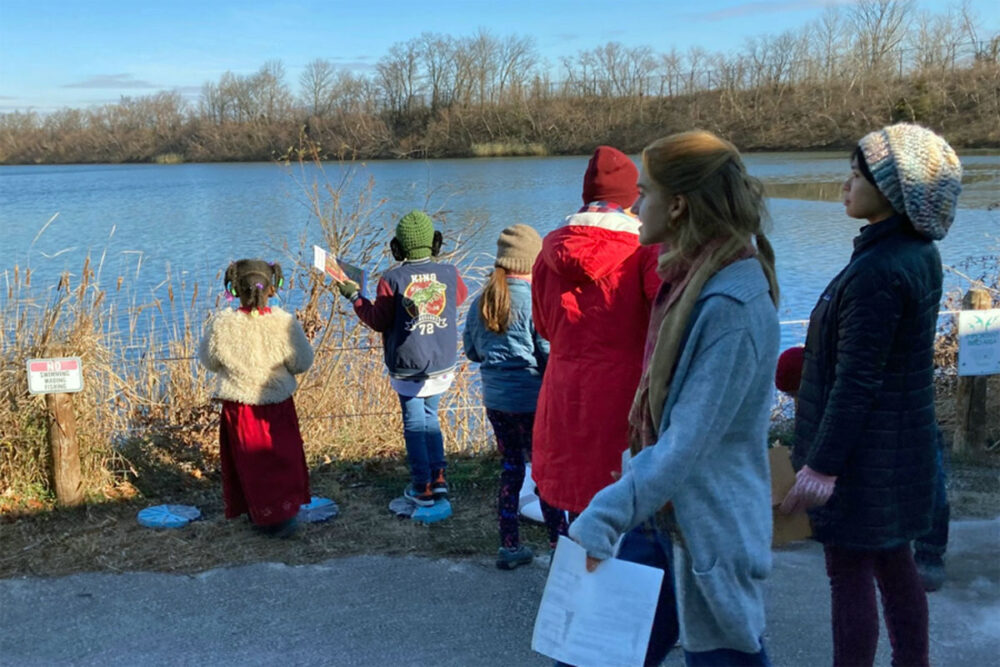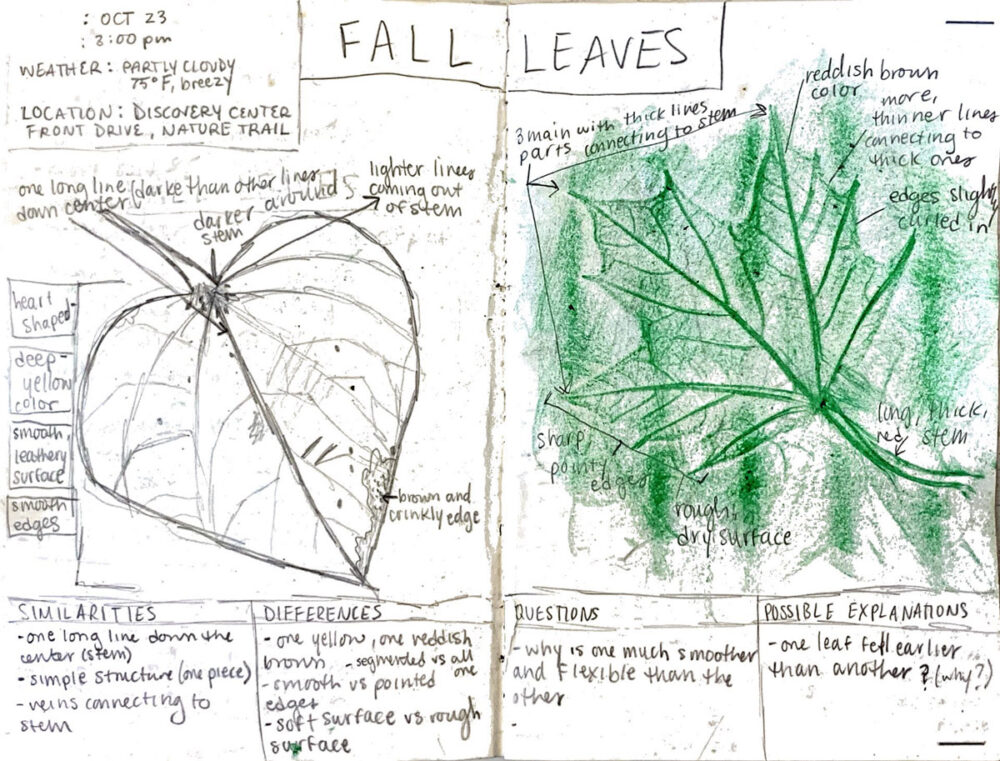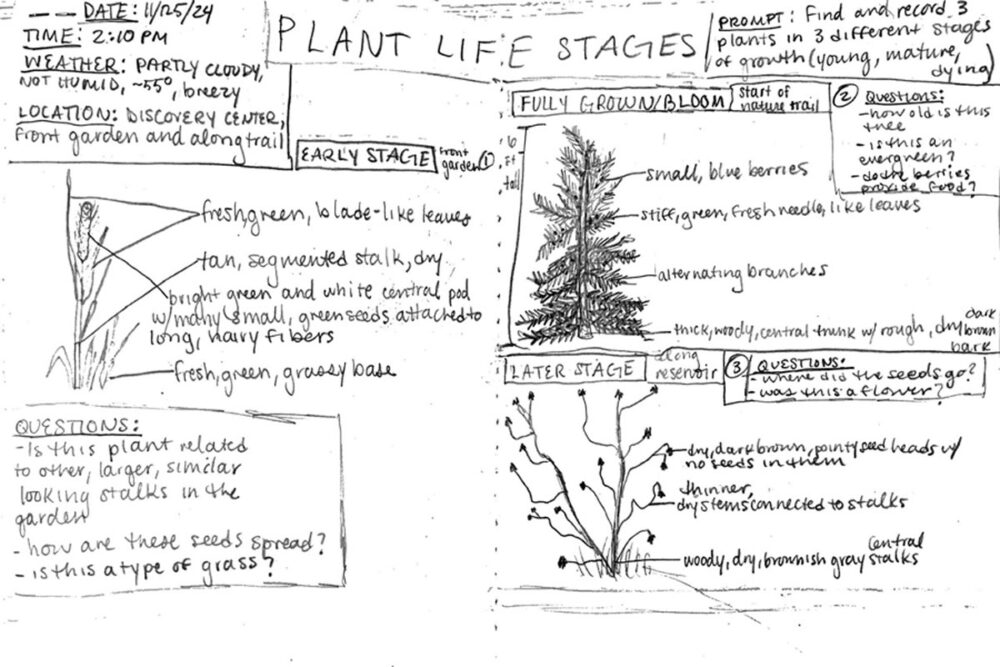
How nature journaling can help you explore local ecosystems
A simple notebook can help you slow down, observe, and reconnect with your local environment.
A cool breeze rustles gently through the lush, green leaves as you make your way down a wooded trail. You want to capture the splendor of the environment around you, but a photo couldn’t do it justice. Pulling out your phone feels somewhat blasphemous.
Many of us have limited access to these encounters with nature, so savoring them is important. But how?
Enter Nature Journaling, a centuries-old practice that uses a notebook to record observations, questions, and ideas about various aspects of the environment, incorporating drawings, words, and numbers.

By slowing down and paying close attention to the details, you can notice patterns that ground you in a sense of seasonality and place. You can tell Summer has just arrived, not by the calendar, but by the ripening of juicy, burgundy Juneberry trees and the frantic chirping of the birds they support.
Detailed observations also require you to be fully present, which encourages mindfulness that reduces stress and builds a sense of calm.
This practice enables a blend of artistic, scientific, and personal reflection that can strengthen your connection to nature, empowering you to care for the environments that surround you. If you observe tiger swallowtail butterflies flocking to the purple coneflowers in your local rain garden, you’ll feel compelled to keep it litter-free.
You don’t have to be a field biologist or a master artist to experience these benefits.
Here are a few simple steps to get started with nature journaling:
- Take a pencil and a small notebook.
- Pick a spot outdoors that you can return to often. This can be a local park, trail, or even a single tree.
- Take note of the date, time, location, and weather conditions. This will help keep track of changes in environmental conditions and ground your observations in a seasonal context.
- Decide on your format/prompt. It’s helpful to start small, like focusing on one plant, animal, or other natural element.
- Get drawing! Capture as many details of your subject as you can. This isn’t about being a great artist or hyper-realistic scientific accuracy; it’s about consistency.
- Use arrows or lines to connect your drawing to written observations. Take note of colors, textures, sounds, and behaviors.
- Jot down any questions you want to research later.
- Use colored pencils, crayons, and tape for any additions, like leaf rubbings and small specimens like flower petals or seeds, in the journals.
Some of my favorite prompts are studying one plant over several months or comparing two to three plants growing in the same area. There are also many extensive online resources available through John Muir Laws for additional exploration.
Ready to dive in?

Luckily, this city is bursting with flora, fauna, and other people looking to explore and care for them. As a part of my role as an FAO Schwarz Fellow and Community Partnership Educator for Audubon Mid-Atlantic, I lead Nature Journaling Workshops at the Discovery Center (3401 Reservoir Drive, Philadelphia, PA).
Participants of all ages are led through a prompt focusing on a different feature of our ecosystem that is unique to that particular season, followed by a craft/workshop that dives deeper into that subject and provides them with opportunities to improve their local habitats.
Our next event is on July 12th, where we will explore the native wildflower meadows and pollinators at the Discovery Center.





